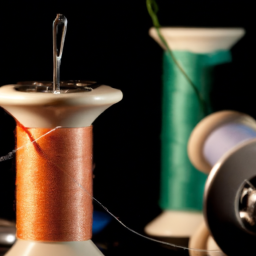
The Fascinating Origin of the Sewing Machine
Sewing machines have revolutionized the textile industry, transforming the way we create and mend our garments. This incredible invention, which we now take for granted, has an intriguing and storied history. Let’s delve into the origins of the sewing/” title=”Stitching Stories: A Beginner's Guide to Sewing”>sewing machine and discover how it came to be!
The Precursors: Early Attempts at Mechanical Sewing
The idea of a machine to assist with sewing can be traced back to multiple inventors throughout history. However, it was not until the 18th century that the concept began to take shape. Thomas Saint, an Englishman, is often credited with the first patented design for a sewing machine in 1790. Although Saint’s machine remains an intriguing piece of history, it is unclear if it was ever built. Other inventors, such as Charles Weisenthal, John Adams Doge, and Josef Madersperger, also made notable contributions during this time.
Revolutionary Innovation: The First Functional Sewing Machine
The first truly functional sewing machine was invented by a French tailor named Barthélemy Thimonnier in 1830. Thimonnier’s machine utilized a single thread and a hooked needle to create a chain stitch. It was a significant breakthrough that earned him a patent in 1830 and the designation of ”the father of the sewing machine.” His creation attracted both attention and controversy and ultimately led to an uprising by French tailors who feared unemployment due to the rapid production capabilities of the machine.
Diverse Improvements: From Lockstitch to Zigzag Stitch
Thimonnier’s initial design was later improved upon by countless inventors worldwide. The most significant breakthrough came in the mid-19th century when an American inventor named Elias Howe patented the lockstitch machine in 1846. This new design used two threaded needles, one from above and one from below the fabric, creating an interlocking stitch that was both secure and durable. Howe’s invention revolutionized the sewing machine industry and laid the foundation for future advancements.
Another notable inventor, Isaac Merritt Singer, created the first commercially successful sewing machine in the 1850s. Singer’s machine introduced various improvements, including a foot pedal control mechanism, which allowed for easier and more precise operation. This innovation made sewing machines accessible to a wider range of people and established Singer as a dominant figure in the sewing machine industry.
Modern Sewing Machines: Automation and Computerization
Sewing machines continued to evolve throughout the 20th century. The early 1900s witnessed the introduction of electric machines, greatly improving efficiency and productivity. Then, in the late 20th century, computerized machines emerged, incorporating advanced features such as programmable stitches, automatic thread tension, and even embroidery options. These modern sewing machines combine technology, precision, and versatility, empowering individuals to create intricate designs with ease.
In Conclusion
From humble beginnings to the extraordinary machines we have today, the sewing machine has evolved significantly over the years. It has played an instrumental role in transforming the way we produce clothing and household items, making sewing more accessible to both professionals and hobbyists. The willingness of inventors to refine and improve upon early designs continues to shape the future of sewing machines, enabling creative possibilities for generations to come.




